
Investigating
The Blackout
Building Better Bones
Investigating The Blackout
Lab Experts in the Spotlight
by allen chen
 |
|
| New York City skyline at nightfall, August 14 | |
As summer days go, August 14 wasn’t especially hot or unusual. When the electrical grid came crashing down in the northeastern U.S. and Canada, leaving tens of millions of people in the dark in the biggest outage in American history, everyone demanded an explanation. What could have gone so wrong?
Researchers throughout the U.S. in the Consortium for Electric Reliability Technology Solutions (CERTS) began mobilizing resources to help the U.S. Department of Energy find an answer. Among them is Berkeley Lab’s Joe Eto of the Environmental Energy Technologies Division, who overnight became a much sought-after expert on the subject.
“Who’s to blame is a question that’s on a lot of
minds,” says Eto. “But it’s much too early to speculate
about this. It will take weeks to study the records of the events
that happened in the affected part of the transmission grid. And even
when we do determine that a triggering event or events took place
at a particular time, there’s still the question of why did
the event happen in the first place.”
Eto has been coordinating the work of the investigation teams that
DOE has fielded in the affected areas. In addition to Eto, experts
from the Electric Power Group, Oak Ridge National Laboratory, Pacific
Northwest National Laboratory, Cornell University, and University
of Illinois at Urbana-Champaign are taking part in these efforts.
The team has been analyzing the frequency data from a grid reliability software tool which was up and running at the time of the blackout. Developed by CERTS, the Area Control Error (ACE)-Frequency Real Time Monitoring System allows experts to monitor compliance with rules that govern the reliable supply of electricity in real time, pinpointing emerging violations. The software, in operation since December 2002, will help shrink the time needed to analyze the data by as much as weeks or months.
The CERTS Program Office is located at Berkeley Lab, and Eto is the manager of CERTS programs. Funding is provided by DOE and the California Energy Commission.
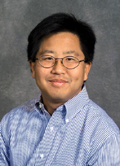 |
|
| Joe Eto | |
“Several of the research goals of CERTS address the issues raised by this blackout directly,” says Eto. “One goal is to transform the grid into an intelligent network that can sense and respond automatically to changing flows of power and emerging problems. Another is to enhance reliability management through market mechanisms, including providing transparent, real-time information on the status of the grid.”
The ACE-Frequency tool relies on data generated every four seconds by all of the 143 North American control areas to create a real-time visual display of the entire power grid. This data will help investigators generate a sequence of events that happened to the grid, and perhaps uncover the reasons why the systems that are supposed to limit the spread of outages failed to such an extent.
Responding to the Aftermath
Shortly after the blackout began, Eto got on the phone to DOE —
and has pretty much been there ever since. And while CERTS researchers
have been laboring, the news media has come calling.
The day of the blackout, CNBC’s Capitol City Report (Washington
D.C.), the Oakland Tribune, Bloom-berg News, and Canadian CNBC all
called Eto and the Lab’s media relations staff seeking comment.
Over the next few days, Eto was contacted by Newsweek’s Chicago
Bureau, and the Discovery Channel Canada, among others. Tom Vacar
of KTVU news in Oakland came and did a short interview.
“I’m very impressed with what you guys are doing here,”
Vacar told Eto after the interview, “I think it’s a significant
national service.”
The media attention is sure to continue for some time, but the results
of the investigation into the cause will be weeks or months away.
In the meantime, the CERTS program of grid reliability research may
begin to see increased public attention.
CERTS Research at Berkeley Lab
Significant CERTS–administered research is now underway at Berkeley Lab. The projects include Chris Marnay’s research on the microgrids concept and Charles Goldman’s work on demand response.
Several months prior to the blackout, Goldman and a consulting firm completed a report assessing the success of the state’s demand response programs, in which large power customers agree to curtail their power demands when shortages threaten the grid. The report was conducted for the New York Independent System Operator and the New York State Energy Research and Development Administration. It concluded that these programs were generally successful at reducing or shifting peak demand loads, but that there were market barriers to wider participation by large electrical customers that need to be overcome. Demand response programs are another way that reliability managers can keep the grid healthy.
In an article entitled “Its coils tighten and the grid bites back,” written three days after the blackout, New York Times correspondent James Glanz looked at past blackouts and attempts to explain some of the complexity of the grid. He wrote, “what all the failures had in common is that the grid — complicated beyond full understanding, even by experts — lives and occasionally dies by its own mysterious rules.” The effects of the blackout, and the prospect of more to come, has shown us why its worth trying to understand those rules better.
CERTS was formed in 1999 to improve the reliability of the U.S. electric power system during a time of transition for the industry. The organization had its origins in the aftermath of the power outages that struck the West in 1996. Eto and other CERTS staff went to work quickly, participating in the report of the Secretary of Energy’s Power Outage Study Team, which examined the causes of the summer 1999 power outages. In 2001-2002, CERTS staff coordinated technical support to DOE for the preparation of the National Transmission Grid Study, which made recommendations for modernizing the grid and preventing failures such as this one.
CERTS members include the Electric Power Group (Pasadena); Berkeley Lab, Oak Ridge, Pacific Northwest and Sandia National Laboratories; and the National Science Foundation’s Power Systems Engineering Research Center (PSERC).
For more information about CERTS, see http://certs.lbl.gov.
Building Better Bones
Lab Scientist Awarded $4 Million Grant
By Dan Krotz
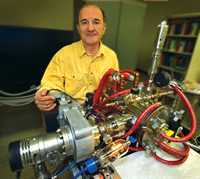 |
|
| Antoni Tomsia in his laboratory | |
Someday, Antoni Tomsia’s research could help people live full lives even as their bones weaken. The Berkeley Lab scientist recently received a $4.3 million grant from the National Institutes of Health (NIH) to develop bone-like materials that could greatly improve implants such as artificial hips and shoulders.
Tomsia’s goal is to harness the latest advances in nanotechnology to fabricate implants that repair themselves, adapt to changing physiological conditions, and mesh with surrounding tissue — in other words, behave like real bone. In contrast, today’s artificial joints are made from metal alloys that often trigger inflammation and immune responses, or require corrective surgery after only a few years. The need for better biomaterials is further underscored by the growing demand for artificial joints. More than 150,000 hip replacements and nearly 300,000 knee replacements were performed in 2000, and these numbers are expected to swell in the future as baby boomers age.
To meet these demands, Tomsia has assembled a multidisciplinary team of scientists from Berkeley Lab, UC Berkeley and San Francisco campuses, and the Bothell, Washington-based SkeleTech, Inc.
“We’re at the interface of chemistry, biology, materials science, and medicine,” says Tomsia, a 25-year veteran of Berkeley Lab’s Materials Sciences Division who arrived from Poland as a post-doc in 1978. “Teamwork is absolutely necessary to design better implants.”
The collaboration will explore ways to make scaffolding, a fundamental building block in tissue engineering that provides a platform on which healthy cells can inhabit and proliferate. This material, when thinly coated onto an implant, facilitates the all-important bond between the implant and surrounding tissue. Over time, as more and more cells inhabit the scaffolding, the implant becomes as enmeshed into the body as any bone.
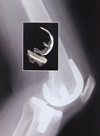 |
|
| Artificial knees could last longer
thanks to Tomsia's research. |
|
But as important as scaffolding is to an implant’s success, researchers have not been able to fabricate a material that both mimics bone’s strength and porosity, and is readily accepted by the body’s immune system. To meld these conflicting characteristics into a single biomaterial, Tomsia is pursuing two re-search initiatives. Both take advantage of bone’s simple composition of calcium phosphate and collagen.
“Our material will have properties exactly like bone,” Tomsia says. “It will absorb stress, and it won’t cause immune responses and inflammation.”
The first approach relies on a calcium phosphate mineral called hydroxyapatite. Using nanosized particles of this mineral, Tomsia’s group has developed scaffolding that features a dense inner core with gradually increasing porosity toward the surface, like a cylindrical sponge with tiny holes near the center, and increasingly larger holes toward the exterior. This combination gives the scaffolding strength without sacrificing porosity.
To make the scaffolding even stronger, they infiltrate its layers with different polymers, with each successively deeper polymer layer less inclined to accept the influx of cells. When a scaffolding-coated implant is inserted into the body, bone cells incrementally invade the scaffolding — first occupying the outer layer, then the next layer, and the next — until the implant slowly becomes a part of the body.
The second approach takes its cue from collagen, a fibrous protein
substance which, along with calcium phosphate, is the main constituent
of bone. Instead of using collagen, however, Tomsia is developing
scaffolding from hydrogel, an organic polymer that closely mirrors
the chemical properties of collagen. Like collagen, the polymer provides
a staging ground for calcium phosphate to coalesce and begin building
bone. Hydrogel scaffolding can also be applied in minute quantities,
enabling it to foster the growth of bone tissue a few cells at a time.
This nanoscale, targeted approach could help speed the recovery of
bone fractures.
Tomsia’s career has steadily trended toward the development
of more life-like biomaterials. After following his father’s
footsteps into materials science, his Berkeley Lab research has focused
on exploring the interface between metals and ceramics. His foray
into hydroxyapatite and hydrogel-based materials began several years
ago, when he designed coatings for industrial applications as part
of DOE-funded research. Now, the NIH bioengineering research partnership
grant allows Tomsia to more thoroughly investigate the biological
attributes of these substances.
 |
|
| Is it real, or is it hydroxyapatite? Synthetic tissue that looks and behaves like the real thing comes alive in this artist’s impression of next-generation scaffolding. | |
Ultimately, Tomsia hopes to develop biomaterials that replicate the
strength, porosity and elasticity of real bone. The latter trait may
lead to longer lasting implants. Because today’s implants are
too stiff, they shield adjacent bones from the stresses of everyday
life, such as the jarring bounce of walking. Unfortunately, bones
don’t grow unless they are stressed (which is why astronauts
lose bone mass). In the case of implants, stress-shielding inhibits
the continuous growth of new cells that keep joints healthy and strong,
which, in turn, causes implants to loosen over time and require corrective
surgery — a fate that befell 59,000 hip and knee replacements
in 2000. Tomsia’s research could greatly reduce the number of
these surgeries.
“I’m very interested in improving people’s lives,”
Tomsia says.
IIn addition to the multi-institution group convened under the NIH grant, Tomsia will receive assistance from several Materials Sciences Division researchers, including Jie Song and Eduardo Saiz, and scientists from Carolyn Bertozzi’s and Rob Ritchie’s research groups.
“We don’t have Leonardo da Vincis anymore. Nobody can do this alone — we have to work together,” Tomsia says.
Breast Cancer Findings Reveal Genetic Brake
 |
|
| Martha Stampfer | |
 |
|
| Paul Yaswen | |
Berkeley Lab researchers have identified a potential new opportunity
for the treatment of breast cancer. Their study, which involved special
lines of human breast cells, provides important new insight into the
relationship between a tumor-suppressing protein called p53, and telomeres,
the structures that protect the ends of chromosomes and enable tumor
cells to grow and divide indefinitely.
“We have shown a new role for the p53 protein in the transformation
of normal breast cells into immortal cancer cells,” says Martha
Stampfer, a biologist with the Life Sciences Division, who led this
study along with colleague Paul Yaswen. “The p53 protein, which
is retained in most breast tumors but is lost more frequently in other
cancers, can act as a sort of emergency brake to slow or even stop
the development of cancer in its early phase.”
Says Yaswen, “Even when it’s not blocking cell division,
the p53 protein seems to have a role in regulating a gene expression
that is critical for the continuous growth of most tumor cells. Mutation
or loss of p53 can propel precancerous cells from an indolent, genetically
unstable, slow-growing state to a rapidly growing and evolving state
that leads to a full-blown cancer.”
Stampfer and Yaswen are co-authors of a paper reporting this research
which appeared in the Aug. 15 issue of the journal Oncogene. Other
coauthors were Berkeley Lab’s James Garbe, Tarlochan Nijjar,
and Don Wigington, plus Karen Swisshelm of the University of Washington.
Normal human mammary epithelial cells (HMEC), like most normal human
cells, have a limited capacity for replication. After about 50 to
80 divisions, irreversible senescence sets in, and HMEC stops dividing
into new cells or dies. This stringently enforced finite lifespan,
called “replicative senescence,” is thought to have arisen
in long-lived organisms, such as humans, as a means of preventing
cancer. Immortalized cells, on the other hand, undergo a transformation
that enables them to overcome senescence. Their growth and division
continues unchecked, a critical step down the road to malignancy and
invasive cancer.
Stampfer and Yaswen have developed cultured HMEC lines to study several
important defects, including the loss of p53 protein which is known
to play a role in the immortal transformation of normal cells.
“In our latest study, we found that p53 plays a role in cancer suppression both before and after cells become immortalized,” says Stampfer. “The role of p53 after immortalization was not known because in previous studies the p53 gene had been inactivated before the transformation to immortality.”
Stampfer, Yaswen and their colleagues discovered that the presence of p53 in newly immortalized cells prevents the cells from expressing high levels of telomerase, the enzyme that maintains the telomeres. Without sufficient levels of telomerase, cell replication slows to a crawl even though the cells are characterized as immortal.
“Most breast cancers do have p53 present, which may explain why breast cancer is less aggressive than many other cancers,” says Stampfer. “Even after breast cells have become immortalized, they may still have difficulty continuing to replicate because p53 is acting to slow the process.”
The observations of Stampfer and Yaswen and their Berkeley Lab research group are consistent with clinical observations that at the early, or “preinvasive,” stages of cancer, the telomeres of cells in a troubled area are very short. Furthermore, the loss or absence of p53 is associated with patients facing the worst prognosis.
“Our findings suggest that even though newly immortal cells have gained the potential to express telomerase, their very short telomeres and low level of telomerase activity may render them extremely sensitive to telomerase inhibitors, especially when p53 is still present,” says Yaswen.
Stampfer and Yaswen believe this extreme sensitivity points to a potential new opportunity for therapeutic intervention. Since most normal cells appear to have no continuous need for telomerase, such a therapy should have few side effects.
Eto Appointed to Power Outage Task Force Group
Energy Secretary Spencer Abraham and Canada’s Minister of Natural Resources Herb Dhaliwal, co-chairs of the Joint Task Force on the Power Outage, announced last week the formation of three working groups for the task force: Electric System, Security, and Nuclear Power.
Welcome to The VIEW
Welcome to the inaugural issue of the Berkeley Lab View. The changing nature of communications at Berkeley Lab has driven a change in our employee newspaper, and we hope you will enjoy reading it.
We call it the View, not only in tribute to Berkeley Lab’s breathtaking geographic location, but as an indication of the visual and written perspectives that we hope will be this publication’s hallmark in the coming years.
With the advent of “Today at Berkeley Lab,” Public Affairs has been working to provide you with your daily dose of need-to-know information. The View gives us the opportunity every two weeks to provide a broader spectrum of information about the Lab community. Just as the scenic views differ at points around the Laboratory, different aspects of the Lab will emerge in the View. Look for more coverage of employees — new and retiring, on the job, and in action elsewhere. While continuing to highlight the science here, the View will expand its coverage of Operations activities, the less visible parts of the Laboratory that are essential to our success.
We will also be experimenting with new ways of telling stories, including the regular use of extended question-and-answer interviews with people throughout the Lab. And we hope to provide more content about the future directions of the Laboratory, including commentary from Lab management.
We hope to make the View as compelling for you to read as the daily “Today at Berkeley Lab.” Let us know what you think. Please call or e-mail me, the editor, or any member of the Communications Department with your thoughts and ideas. Enjoy!
Reid Edwards
Head, Public Affairs
Lab Website Monitors Power Grid
Want to keep tabs on power? A Berkeley Lab website,
http://currentenergy.lbl.gov/, presents an approximate picture
of the dynamic balance of the five deregulated market areas in the
United States. The power grid that supplies the electric current coming
into homes and businesses is designed to maintain a balance between
the consumer demand for electricity and the amount supplied by generators.
The website boasts several charts that reveal a detailed picture of
how much electricity is needed and how much is available in each area.
On the demand side, the day's forecast load is shown along with the
current load, updated in real time. The available supply is estimated
as a sum of the online capacity in the region plus the net imports.
Drosophila Project Gets $15 Million Grant
 |
|
| Gene expression in a Drosophila embryo | |
The National Institute of General Medical Sciences has awarded a $15 million, five-year grant to the Berkeley Drosophila Transcription Network Project, a multidisciplinary team working in Berkeley Lab’s Genomics, Life Sciences, and Engineering Divisions. The grant will support research to develop methods to read the information encoded in animal genome sequences.
While the recent sequencing of the human genome is a tremendous step forward, most of the information it contains cannot be read. The project team will use the fruit fly as a model to determine the DNA sequences bound by proteins that control the cells in which genes are expressed.
Computer Protection’s Gene Schultz honored
Gene Schultz of the Computer Protection Program and a popular speaker on the cybersecurity conference circuit was recently recognized with the Best Speaker/Conference Contributor Award by the Information Systems Audit and Control Association. The award honors “excellence in providing technical education to IS audit, control and security professionals.”
Vine wins energy award
The International Energy Program Evaluation Conference (IEPEC) has awarded its 2003 Lifetime Achievement Award to Edward Vine of the Environmental Energy Technologies Division. Only seven individuals have received this award since 1989. Vine has been involved in the evaluation of energy efficiency programs and technology performance measurement at Berkeley Lab for more than 20 years.
Short Takes
Lab Retiree’s Beautiful Experiment
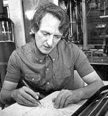 |
|
| Neil Bartlett | |
Chemical & Engineering News, published by the American Chemical Society, recently asked chemists and historians from around the world to name “The Top 10 Most Beautiful Experiments Performed in Chemistry.” On a list of names that included such scientific luminaries as Louis Pasteur, Joseph Priestly, and Marie and Pierre Curie was that of Neil Bartlett, a retired senior scientist with Berkeley Lab’s Chemical Sciences Division and UC Berkeley Professor Emeritus of Chemistry.
Bartlett made the list for his experiment in 1962, while he was at the University of British Columbia, that produced the first noble-gas compound. Prior to this work, conventional scientific wisdom had long held that chemical compounds could not be formed from noble gases because their stable electronic configuration rendered these elements unreactive. Bartlett rocked the chemistry world when he showed that platinum hexafluoride, a highly reactive compound, combines with xenon to form a salt that is stable at room temperature.
Ready, Set ... Runaround
One of the most popular events at Berkeley Lab, the annual Run-around, will be held this year on Friday, Oct. 10, from 12 to 1 p.m. The 3-km (1.86 mile) race starts at noon at the Firehouse and finishes at the cafeteria. Both runners and walkers are welcome to take part in the race, and no signup is required. After the Runaround, enjoy refreshments and entertainment on the cafeteria lawn. Participants are eligible for prizes and T-shirts. For more information see http://cfi.lbl. gov/~derenzo/runaround, or contact Steve Derenzo at sederenzo@ lbl.gov.
Section Club Reception
The Section Club, an organization for spouses and partners of researchers
and scholars at the Lab and on campus, is holding its annual fall
reception on Tuesday, Sept. 23, from 11:30 a.m. to 2 p.m. at University
House, located on the UC Berkeley campus.
The group, now in its 77th year, derives its name from the various
sections within the club — birding, book discussion, gourmet,
and drama, among others. The club also provides various services to
the campus and Lab community, such as the Equipment Loan Center, which
allows visiting scholars and their families to borrow household items
(such as toasters or blankets) for a small fee — and raise money
to help support Berkeley students. Those interested in joining the
Section Club are invited to attend the fall reception. For information,
call Barbara Gordley at 524-1252.
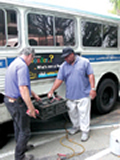 |
|
| Bus driver Roger Thomas
(right) and garage attendant Richard Gano inspect the dead battery
that felled Thomas’ bus last week. Photo by D. Lyn Hunter |
|
Moving People Up and Down the Hill
The Lab's shuttle service operates so smoothly, most of us take it
for granted. And that’s just fine with our hard-working transportation
staff, because it means they’re doing their job well. Even when
a bus breaks down — as was the case with the one pictured below,
which lost power last week when its battery died — it hardly
affects the carting of staff and visitors up and down the hill, says
bus supervisor Tammy Brown.
Consider some of the following stats to get a sense of the magnitude
of the shuttle service operation:
• Approximately 2,500 people use the shuttle each day.
• One offsite bus goes up and down the Hill 35 times each day.
• Each year, the bus fleet racks up nearly 165,000 miles.
• The Lab’s 13 shuttle buses are operated by 18 drivers.
• The shuttle fleet uses about 6,000 gallons per month of a
special, environmentally–friendly fuel blend (20 percent vegetable
oil and 80 percent diesel).
• There is one mechanic on staff for all emergency and diagnostic
work.
BOOK REVIEWS
Mathematics for the New Generation
- Mathematics by Experiment: Plausible Reasoning in the 21st Century,
by Jonathan M. Borwein and David H. Bailey (A. K. Peters, Ltd.)
- Experiments in Mathematics: Computational Paths to Discovery, by Jonathan M. Borwein, David H. Bailey, and Roland Girgensohn (A. K. Peters, Ltd.)
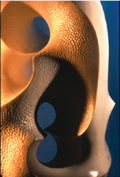 |
|
| “Figure-Eight Complement,” by sculptor and mathematician Helaman Ferguson, embodies a mathematical truth unsuspected by the sculptor but discovered by physicist David Broadhurst using Ferguson's own PSLQ algorithm. | |
David Bailey, chief technologist for the Lab’s Computational
Research Department, is co-author of a pair of books that, even though
they won't appear in print until next month, have already generated
enthusiastic reviews (see Scientific American, May 2003).
For those who just can’t wait, what Bailey calls a “Reader’s
Digest version” — 60 pages of engaging material from both
volumes — is freely available online at http://www.expmath.info/expbook-C.pdf,
with a cornucopia of related resources at
http://www.expmath.info.
In Mathematics by Experiment, Bailey and his longtime collaborator
Jonathan Borwein, professor of science at Simon Fraser University
in Vancouver, B.C., note that while applied mathematicians and scientists
were quick to embrace computer technology, pure mathematicians were
slower to see the possibilities. Two decades ago, when Bailey and
Borwein started collaborating, “there appeared to be a widespread
view in the field that ‘real mathematicians don't compute.’”
Since then hardware has "skyrocketed in power and plummeted in
cost," and powerful mathematical software has become available;
just as important is the new generation of mathematicians skilled
at using these tools. “The computer provides the mathematician
with a ‘laboratory’ in which he or she can perform experiments,”
the authors write, “analyzing examples, testing out new ideas,
or searching for patterns.”
In this virtual laboratory Bailey, with Borwein and other colleagues, was among the first to discover a number of remarkable new algorithms — among them a simple formula for finding any hexadecimal digit of pi (without knowing any of the preceding digits) and, subsequently, proof that a wide class of fundamental constants are mathematically “normal.”
Bailey and Borwein don’t claim computers can supply rigorous proofs; rather, the computer is a way to discover truths — and avenues for approaching formal proofs. But often, the authors add, the evidence supplied by computation is “at least as compelling as some of the more complex formal proofs in the literature.”
Drawing on their own work and that of others, Bailey and Borwein and, in the second volume, their German colleague Roland Girgensohn, not only explain experimental mathematics in a lively, surprisingly accessible fashion but give many engaging examples of the “new paradigm” in action.
Viewpoint
A
Talk with Randy Scott
HR Manager on Key Employee Issues
Randolph R. Scott has served as head for Human Resources since December 1999. He is responsible for Berkeley Lab’s programs in employee benefits, compensation, development and training, labor and employee relations, recruitment, and personnel policies. He came to Berkeley Lab after six years at Kaiser Permanente in Oakland, where he was division director for employee relations and, before that, an area vice president for human resources. For six prior years, he was HR vice president at Blue Cross-Blue Shield in St. Louis and spent a year with JC Penney as its healthcare cost containment manager. He also spent seven years as general manager of human resources for Diamond Shamrock Corp. in Dallas, a large energy and chemical company.
VIEW: We hear a lot about escalating health care costs and shifting the financial burden increasingly to the employee. Is there any indication what the health benefits picture will be this coming year for Berkeley Lab?
SCOTT: It’s unclear, and it’s complicated. But we can say with some certainty that medical program costs will increase 16 to 17 percent in the coming year. Dental and vision care could be another 10 percent. Employee disability and term insurance may also escalate 8 to 10 percent. It is our hope that we can find ways to make the burden as minimal as possible on staff. We’ve been spending many hours on the (University of California) Employer Contributions Task Force dealing with this problem. We won’t know the bottom line until sometime this fall as UC receives contract bids from its coverage providers.
VIEW: What percentage of the total health care bill is paid for by the Laboratory?
SCOTT: Actually Berkeley Lab is among the upper echelon of employers in the country when it comes to paying for employees’ health benefits. The national average for company contributions is 80 percent. The Lab pays 90 percent of its employees’ health care costs.
VIEW: Why have the costs skyrocketed in the last few years?
SCOTT: There are several factors. First is Medicare. It’s the largest consumer and provider of health care reimbursements in the country. Government reimbursement rates are being reduced. Those costs have to be absorbed by insurance providers, by private citizens or by employers.
The cost of prescription drugs has also gone up by triple the rate of inflation just last year. This has to do with a more aggressive and costly research effort by pharmaceutical companies and their marketing programs, along with the higher rates they pay for regulatory costs and liability insurance.
Doctors and hospitals had been absorbing many of these costs over the last several years. Consolidation of hospital groups and HMOs has tended to force the price of services higher and their Medicare reimbursements are lower. Insurance companies have also tightened their allowable coverage.
VIEW: Is the California state budget crisis having an effect?
SCOTT: By all means. The state gives UC money for a variety of operating expenses. The state has indicated that it plans to provide no funds for salary increases and no increased funding for benefit costs. With this budget signed by the Governor, UC has the full burden to try to find financial support to cover some of the benefit cost increases. How UC will do that is not clear at this time.
VIEW: What are some of the things UC is considering to mitigate the damage?
SCOTT: For one, it is hoping to develop a formula that at least protects those in the below-$40,000 annual income band. There could be a sliding scale based on income. Or there’s been talk of differentiation in reimbursements in which the employee would get the maximum subsidy and the dependents might be subsidized at a different level.
VIEW: Let’s talk about something else that is occupying your staff’s time — the Unit 99 election. What is the status at this point?
SCOTT: The University Professional and Technical Employees union (UPTE) has been granted approval by the state to conduct an election among what are referred to as “administrative professionals.” What job classifications are included in that group has not been determined. The University and the Lab are negotiating right now with UPTE to try to reach agreement on the nature of the unit, as well as on other relevant issues. If we can’t reach agreement, the issues will go to the state Public Employee Relations Board (PERB) for adjudication.
VIEW: What is the Laboratory’s view of unionizing?
SCOTT: The Lab respects our employees' rights under the Higher Education Employer–Employee Relations Act both to participate in union activities and to refuse to do so. One thing is for sure: it is absolutely critical to vote in elections. A simple majority of the votes cast decides an election, and historically, some elections have been decided by very small margins. We strongly encourage employees to be as well informed as possible on the issues and to vote.
VIEW: When might this happen?
SCOTT: Depending upon the results of current negotiations, the vote could come as soon as this fall.
VIEW: As you know, the Laboratory is in the final stages of this year’s Performance Review and Development process. What’s ahead?
SCOTT: We’re in the midst of planning for our annual merit increase program, and in the next few weeks employees should be receiving feedback from their supervisors. Scientists and engineers are scheduled for management review in September, and by early October, reviews for the non-scientific staff should be completed. I am especially impressed with the active roles Director Shank and his deputies (Sally Benson and Pier Oddone) play in the process. Their hands-on involvement is a “best practice” you don’t find in too many organizations. I am grateful to all participants in the Lab who have made this such a thoughtful and rigorous process.
VIEW: What can people expect in terms of merit increases for FY04?
SCOTT: Of course, the individual amounts are dependent upon the performance evaluations and other factors. But the DOE has approved Berkeley Lab’s Compensation Increase Program (CIP) request of a 4 percent average merit increase for scientists and engineers (S&E), and a 3 percent average for professional, administrative and technical (PAT) employees. The difference between the two figures represents an attempt to bring the S&E’s up closer to the market average, behind which we lag by 11 percent. The PAT salaries lag the market by 5 percent. In a tough economic year, which sees UC campuses getting little or no salary help, we feel quite fortunate to be where we are.
Zach Makes Building Cool Stuff Cool
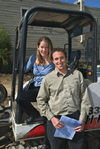 |
|
| Liz and Zach Radding at the Construction Site |
|
Build it, and they will come. And build things.
That might as well be Zach Radding’s mantra. Soon he will get a chance to test it out, as his three-story, 8,000-square-foot monument to one man’s ingenuity goes up at the corner of Adeline and Harmon, just south of Ashby BART in Berkeley. Not bad for a 27-year-old with a dream, a supportive wife, an active imagination, and a bunch of tools.
Radding, an engineer for the Engineering Division’s DesignWorks here at Berkeley Lab, reminds you of the brainy kid who tinkers and invents and figures things out — a present-day Jimmy Neutron. Get him talking about “Zach’s Cool Stuff” — ZCS for short -— and he lights up like one of his laser cutters.
“It’s not a school. It won’t have a classroom feel,” he says of his new ZCS building under construction. “It will be an educational facility. It’s not super-defined yet; the concept is constantly being tweaked. The space will be open and modular. And we’ll teach people how to build things.”
 |
|
| Want to build a four-legged BEAM walker robot? ZCS gives step-by-step and part-by-part instructions. | |
Want to learn how to put together a computer-controlled laser? Radding and his volunteer teaching staff will show you. How about a six-legged robotic pet? No problem. Interested in making a hologram? He’ll show you how. Mechanical or electronic devices, computer-guided mechanisms, whatever — “all the things that seem mysterious,” he says. “We’ll take the mystery out of building things.”
When ZCS opens sometime next year, Radding says he expects to have machine tools — mills, lasers, etc. — and workbenches and carts filled with equipment. Anyone over the age of 13 can attend ZCS, and teachers are especially welcome. In exchange for learning how to build things, teachers can attend sessions for free but will be asked to donate some time back to ZCS as an instructor. Students will sign up for their time, pay a fee, and curricula will be tailored to their interests.
 |
|
 |
|
| Top: Artist’s rendition of
the building that will house Zach’s Cool Stuff Bottom : The construction site right now at the corner of Adeline and Harmon |
|
Overseeing it all will be Zach and his wife Liz (formerly Liz Cahalen, who works at Berkeley Lab as the site licensing coordinator in Computing Sciences). They met in a San Francisco bar, and Liz soon learned what she was in for. On their first date, he showed her his laser. “Our dating was basically in Home Depot,” she recalls.
Zach recalls being that “geeky” kid in school, enjoying and exploring anything with buttons. A high school instructor in Arizona turned him on to electronics, so he took night classes “surrounded by students excited about building things.” In college, he said he always had people over to the house building things, including one exceptionally bright senior who didn’t know how to drill a hole but wanted to build a robot. Radding taught him how, and a lifelong ambition was born.
To raise the capital to build ZCS, the Raddings refurbished and sold two old houses in the East Bay, working nights and weekends over a two-year period. Then there was the City of Berkeley and its building code. After five design review meetings, two zoning meetings and seven plan check submittals, he received his construction approval and broke ground at the empty lot in June.
There’s more to be done than just the construction. Radding says he’s seeking corporate sponsors to help furnish and stock ZCS, and he’s encouraging donations of tools and new electronic equipment. “We just want to fill the place with so much cool stuff, you’ll want to build something, too,” says the kid with the dream.
“It’s been a long road, and we’ve still got a ways to go,” says Liz. “But he’s pulled off a lot of stuff in the past. Once we started, it never became a question of not doing it.”
Find out more about Zach’s Cool Stuff at www.buildcoolstuff.com.
Flea Market
- AUTOS & SUPPLIES
- ‘01 SUBARU OUTBACK LIMITED, blk/gold, 5 sp, 4 cyl, 90K mi, all pwr, CD, 6 airbags, dual sliding moonrf, roof rack, abs, exc maint, exe cond, $14,000, Mark, 643-0297, 236-1215
- ‘97 TOYOTA COROLLA CE, 55K mi, ac, am/fm stereo, all pwr, dual front airbag, abs, exc mech cond, all maint rec, little scratch on fr/back bumper, otherwise looks new, clean in/out, $4,000 neg, George, X6052, 220- 5839, 841-5703
- ‘94 HONDA ACCORD, dark navy/blk 4 dr sedan, 99K mi, 5 speed, ac, all pwr, all records, recently detailed, exc cond, anti-theft, am/fm/cd, $5,700, Pam, X6461
- ‘93 NISSAN SENTRA XE, blk, 2dr, 120K mi, 5 speeds, cruise, am/fm/ cass, ac, exc cond, $2,900/bo, Han, X5377, swhan@lbl.gov, 233-9723
- ‘92 MAZDA MPV MINIVAN, $2,800, 160K mi, new service & batt, cruise, all pwr, rear ac, am/fm/cass, runs great, exc for family, 2nd owner, 2WD, GUSTAVO , X 4473, 524-6095
- ‘92 FORD TAURUS, good cond, new tires, 132K mi, $1,700,Viktor , X2685, (925) 284-5684
- ‘90 HONDA ACCORD LX, 173K mi, red, 2 dr, loaded, runs well, dent in left dr (old minor accident), $950, Andre, X6745, aanders@lbl.gov
- ‘89 FORD ESCORT LX station wagon, 4 dr, 1.9L, auto, brown, 60K mi, good cond, $1,600/bo, Givon, X4196, 883-1650, dgivon@lbl.gov
- ‘86 VW GTI, 5 sp manual, 175K mi, good cond, ps, sunrf, new trans, new axles, new brake cyl, runs great, very clean, $1,600, Alex-ander, aziegler@lbl.gov, 665-5920
- ‘79 VOLVO, 4 sp, fairly clean, runs great, recent tune up, new master brake cyl, great commuter car, $750/bo, Jerry, X2280, 625-9308
- ‘64 F-100, auto, 292 cid, shortbed, many new parts, $1,500, Jerry, X2280, 625-9308
- ‘64 CLASSIC FORD MUSTANG, blk, sunrf, 10 disc chngr, $6,500/bo, Martin, 520-7569
- HOUSING
- ALAMEDA, 2+ bdrm home, 25 min from LBNL, 1933 Medit split level, beamed ceiling, fp, hw flrs, din rm, new kitchen & appl, garage, workshop, laundry rm, fenced backyard, gardener incl, $1,850/mo, William, 522-7024
- ALAMEDA, duplex avail 10/1-12/1/ 03, yard, porch, & garden, 3 blcks from the beach, close to park, 2 blcks from Trader Joe's, Boogie Woogie bagels, busses, shops, $980/mo, dates & cost possibly neg, Susan, 523-2317
- ALBANY, lge 1230-sq-ft, eleg, fully furn 2/2 condo, well kept sec quiet complex, avail 9/1, pool, 2-car garage, exerc rm, nr market, BART, schools, bus, Denyse, 848-1830, dchew2000@yahoo.com
- ALBANY house, 2 bdrm/1 bth, 900 sq ft, hrdwd flrs, fp, apple tree, detached garage, quiet st nr Solano, avail 10/1, $1,600/mo, $2,000 sec+1st mo rent, credit report, refs, no pets/smoking, Miguel, X6443, 847-3197, nmhudson@pacbell.net.
- ALBANY, 555 Pierce St, partly furn 2 bdrm/2 bth condo, kitchen w/ bar, great bay view, pool, tennis, 24-hr-sec, garage parking, bus/BART to LBNL/UCB, nr shopping ctr, no pets/smok, lease, avail now, $155/ mo+dep, Anie, 215-7636, 828-8688
- ALBANY, lge studio w/ sep ent, bth w/ shower, sep kitchen & dinette, deck w/ view, on a resid str, 30 min walk to campus, nr pub trans & shops, $900/mo, all util incl except phone, avail now, Grazyna, 525-3746, motekemah@aol.com
- BERKELEY HILLS, fully furn rm w/ sep entry, full kitchen priv, w/d, quiet neighbrhhd, loveley backyard, next to bus stop, avail now, $890/mo incl util, labartists@ aol.com, Arun, 524-3851
- BERKELEY HILLS, furn 1 bdrm apt, lge & beautiful in quiet neighbrhd, nr shops/public trans, marble bth, priv patio, no smok/pets, $1,295/ mo + util, Helga, 524-8308
- BERKELEY HILLS, furn rm in lovely house nr campus & Lab, priv bthrm, kitchen & laundry facilities, decks, views, no smok, avail now, $850/mo, Fred, 486-4892, 841-3552
- BERKELEY HILLS, by wk/mo, quiet furn suite, sleeps up to 3 in 2 bdrm/1bth, quiet, eleg, spacious, bay views, DSL, cable, microwave, walk to UCB, Denyse, 848-1830, gfchew@mindspring.com
- BERKELEY, 1 bdrm/1 bth home, close to UC, BART & shopping, skylights, double pane windows, wd flrs, high ceilings, 2 story, http://home.comcast.net/~laxsmio1/Apt4Rent.html, laxsmio1@ comcast.net, 849-3146
- BERKELEY, furn rm in priv home, 5 bl to campus, Euclid/Cedar, close to LBNL shuttle, share w/ 1 prof woman & 1 vis scholar, $650/mo + utilities, RUI, 458-1287
- BERKELEY, Hearst Commons, 1146-1160 Hearst, studio townhouses w/ decks, hrdwd flrs, skylights, dw, ac, sec, wired for cable/sat, Ian, 548-1831, $825/mo, lease through 7/04, hearstcommons@jps.net for pictures
- DOWNTOWN BERKELEY, lge studio, new bldg, 1/2 blk to campus/LBL shuttle/pub trans/shops, modern, luminous, w/d, parking, elev, cable TV, wireless internet, shared terrace, Allston Way betw Oxford & Shattuck, $1,350/mo, avail 9/1, slopez01es@ yahoo.es
- EL CERRITO, 1 yr starting 8/15, rm+ bth in 4 bdrm/2 bth house, exc neighb nr BART & bus, walk to shopping, no smok/pets, $450+dep $450, Lily, 215-6462
- EL CERRITO HILLS, nr Albany/ Kensington border, spacious studio w/ bthrm, fully furn, phone line, kitchenette w/ microw, stove, refrig, incl util, laundry, cable, access to yard, str parking, some storage, access to community pool & tennis crts, nr pub trans/shopping, 15 min from UC, $1,000/mo, Vojislaw, 525-8211
- NORTH BERKELEY, garden cottage & med size rm in lovely home, avail immediately, full breakfast daily, walk to LBNL shuttle, $750/mo or $325 wkly, Helen, 527-3252
- NORTH BERKELEY, studio, lower level fully furn, incl dishes, linens, sep ent, laundry on 2nd flr, off street parking, avail 9/8/03, $750/mo + dep + util, no smok/pets, Rochelle, 649-1989, (415) 435-7539
- OAKLAND HILLS, bay view home nr Montclair, 3 bdrms 2 1/2 bth, lge rec rm, 2 car garage, $2,100/mo, Bob, (925) 376-2211, rrs@value.net
- OAKLAND HILLS, studio, sweeping bay view, state of art kitchen, new stove, hrdwd flrs, designer cabinetry, kitchenette w/ microw, refrig & sink, 1.5 marble bth, jacuzzie, 13-ft ceilings, glass walls/drs, $1,300, priv deck, hot tub, str parking, laundry facil, util pd, $1,600 sec dep, Kate, 547-0555, katehanna@ aol.com
- RICHMOND, 1 bdrm, lge, sunny, 15 min from UCB, pub trans, views, trails at Richmond Marina Bay, lease monthly or yearly, $896/mo, Joanna, X4558, 235- 8839
- ROOM OR RV PARKING, for lab employee, Mon thru Thurs nights only, Bill, X4466
- SAN LEANDRO, 2 bdrm/2 bth, lge fam rm + new detached studio/ office cottage w/ bthrm, nr BART, I-580/880, schools & downtown, great resid neighbrhd, $2,350/mo, avail 9/1, $2,500 sec, dep + 1 yr lease req, (925) 408-4435, doyleproperties@yahoo.com
- STOCKTON, 3 bdrms, central heat/ air, corner lot, 1505 sq ft, pool across str, avail early Sept, will consider renting to 3 sep parties, Bryan, X6182, 538-3001
- VALLEJO, Glen Cove area, 3 bdrm/ 2.5 bth, split level home, great view, remodeled kitchen & bth, lge yard w/ deck & pond, pref no pets/neg, close to shopping & freeway, $1,775/mo + dep, avail 9/8, LaFever Matison (707) 449-8500
- HOME FOR SALE
- HERCULES, 4 bdrm/2.5 bth, 1963 sq ft, lrg yrd w/pool & kid play area, many extras, $499,900, Dan, X7275
- MISC FOR SALE
- APPLE IMAC DV 400 MHz G3 processor, upgr to 320 MB, Mac OS 9.2.1, 10 GB HD, DVD/CD ROM, 56k mo-dem, 2 firewire ports, exc cond, orig boxes/software, plays DVDs, good for kid or beginners, can be upgr to OSX, $150/bo, Jon Koomey, X5974
- BEDROOM SET, oak, queen sz bookshelf headboard, pier cabinets w/ lots of storage, light bridge, queen matt set, $650/bo, Gudrun Kleist, X7824, 222-2320
- ROOM AIR CONDITIONER, Friedrich, SQ06J10, 8000 BTU, Ostar series, electr thermostat w/ money saver, $200, Weilun, X4079, 435-4021
- SOFA BED $150; Mitsubishi color TV, $150; rugs; 2 2-drawer file cabinets, $50/ea or $75 for both, maple din rm table $125; pots/pans, dishes, end tables, bookshelf, outdoor furn, lots more, b/o, Susan, X5437
- JVC, 27" TV front AV plugs, dig comb filter, good cond, $150; La Z Boy recliner, very comf, $50; lamps, end tables, chairs, Eric, X5568, 649-8504
- MULTI-FAMILY YARD SALE, Sat, 9/6, 8:30-2 p.m., furniture, TV, rugs, objects d'arte, household items, bric-a-brac, deals, Hillegass/Russell, Berkeley's Elmwood distr, Susan, X5437
- SANYO 19 color stereo TV $40; RCA VCR $20; leather office chair $70, Yang, X2782
- TREK 2120 rd bike, 6 yrs old, gray & purple, exc cond, 51 cm, 21 sp, carbon tubes/alum rear triangle, Shimano RX100, clip on pedals, 2 water bottle cages, fanny pack, odometer & bell, $600/bo, Loretta, 530-3950
- FREE
- FUTON, queen sz, in Albany, Mike, X5143, 525-4483
- LOVING home needed for a gentle 6-yr-old dobie, great w/ children & other dogs, not with cats, Marilee, X4145
- SMALL DRESSER, rustic, 4 drawers; microwave oven; wok; tent; car bike rack; Umax SCSI flatbed scanner (PC or Mac), Pierre or Margot, 524-8672, prlmic@earthlink.net
- TANDY 1000 PC w/ 2 5-1/4 " drives, monitor & keyboard, runs DOS 3.2 not incl, John X6252, 317-5850
- WANTED
- COMMUTER to & from Stockton, Bryan, X6182, 538-3001
- VANPOOL RIDERS, Fairfield/Vallejo to Berkeley, Mary, X6462
- VACATION
- WAPATO POINT RESORT on Lake Chelan, Manson, WA, 1 bdrm/2 bth unit, avail week of 9/4, a second unit also avail same week, $600/wk each, discount for both, Sherie, X5894
- LOST & Found
- LOST: Amethyst stone, 2 CTW in Bldg 90 or vicinity, Joyce Cordell, X4759
- FOUND: Small earring stud, in the cafeteria parking lot nr the ATM, small pink stone w/ long shank, Lynn, X4193
Flea Market Policy
Ads are accepted only from Berkeley Lab employees, retirees, and onsite DOE personnel. Only items of your own personal property may be offered for sale. Submissions must include name, affiliation, extension, and home phone. Ads must be submitted in writing (e-mail: fleamarket@ lbl.gov, fax: X6641, or mailed/delivered to Bldg. 65.) Ads run one issue only unless resubmitted, and are repeated only as space permits. The deadline for the Sept. 19 issue is Thursday, Sept. 11.